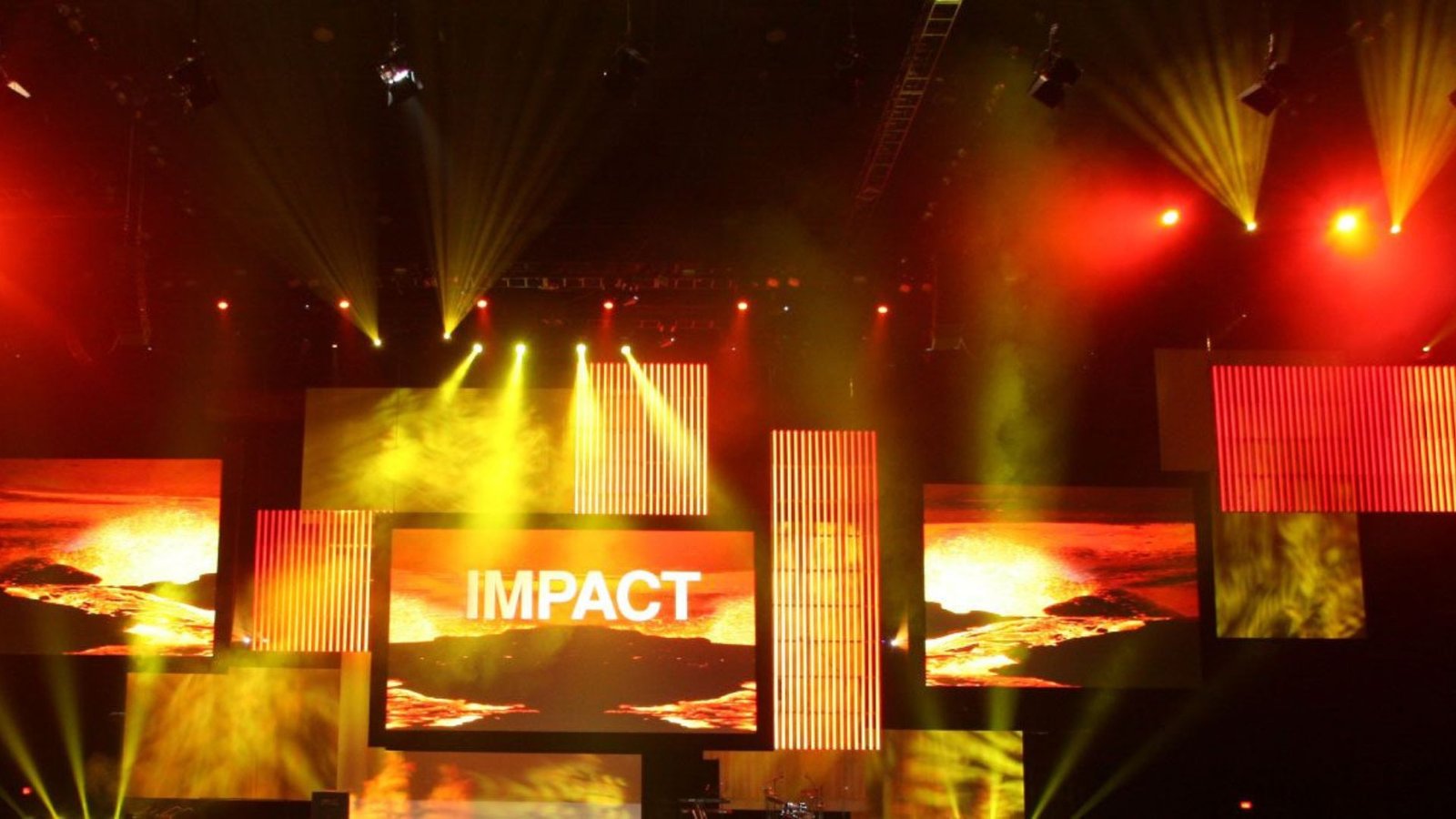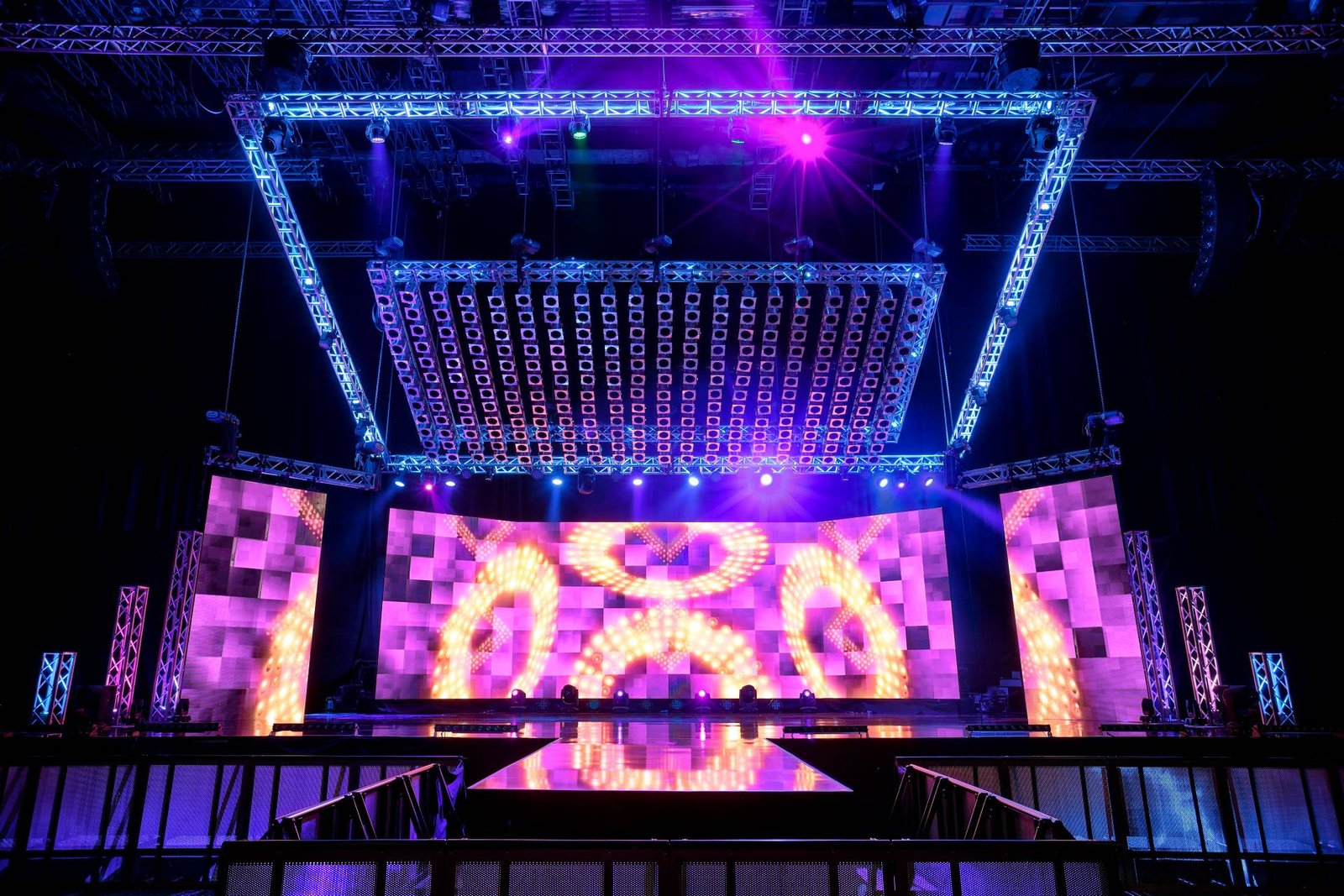Stage design continues to evolve, blending creativity with technology to enhance theatrical experiences. As we move into 2024, several trends are emerging that promise to transform how stage designs are conceived and executed. This article highlights the top stage design trends for 2024, showcasing the latest innovations and creative approaches.

Immersive and Interactive Environments
Audiences increasingly seek experiences that go beyond passive viewing. Immersive and interactive stage designs are becoming more prevalent.
a. 360-Degree Stages
- Overview: Stages designed with audience seating encircling the performance area, creating a fully immersive experience.
- Benefits: Allows for a more intimate and engaging connection between performers and the audience.
b. Interactive Projections
- Overview: Use of projections that respond to actor movements or audience interactions.
- Benefits: Enhances storytelling with dynamic visual effects that change in real-time.
Sustainable and Eco-Friendly Designs
Sustainability is becoming a key consideration in stage design, reflecting broader environmental concerns.
a. Recycled and Reusable Materials
- Overview: Incorporating materials that are recycled or can be reused for multiple productions.
- Benefits: Reduces waste and lowers the environmental impact of stage design.
b. Energy-Efficient Lighting
- Overview: Use of LED and other energy-efficient lighting solutions.
- Benefits: Minimizes energy consumption and supports green production practices.
Technological Integration
Technology continues to advance, providing new tools and techniques for stage designers.
a. Augmented Reality (AR) and Virtual Reality (VR)
- Overview: Use of AR and VR to create virtual sets or enhance physical sets with digital elements.
- Benefits: Expands creative possibilities and allows for unique visual experiences.
b. Automated Set Changes
- Overview: Implementation of automated systems for quick and seamless set changes.
- Benefits: Enhances the efficiency of scene transitions and reduces manual labor.
Modular and Flexible Designs
Modular and flexible stage designs are gaining popularity for their adaptability and versatility.
a. Modular Set Pieces
- Overview: Use of interchangeable and movable set pieces that can be easily rearranged or adapted.
- Benefits: Facilitates quick changes between scenes and productions.
b. Multi-Functional Spaces
- Overview: Designing spaces that serve multiple purposes or can be transformed for different scenes.
- Benefits: Maximizes the use of stage space and reduces the need for extensive set changes.
Enhanced Lighting Techniques
Lighting continues to play a crucial role in stage design, with new techniques emerging to create stunning effects.
a. Dynamic and Adaptive Lighting
- Overview: Lighting systems that adjust automatically based on the performance or audience interaction.
- Benefits: Provides a more responsive and immersive lighting experience.
b. Projection Mapping
- Overview: Mapping projections onto three-dimensional surfaces to create intricate visual effects.
- Benefits: Adds depth and texture to the stage design, enhancing visual storytelling.
Minimalist and Abstract Aesthetics
Minimalist and abstract designs are trending for their ability to focus attention on the performance itself.
a. Simplified Set Designs
- Overview: Use of minimalistic set elements to create clean and uncluttered stages.
- Benefits: Allows the performance to be the focal point and reduces distractions.
b. Abstract Visual Elements
- Overview: Incorporation of abstract shapes and forms to create unique and thought-provoking visuals.
- Benefits: Offers creative freedom and encourages audience interpretation.
Cultural and Historical Influences
Stage designs are increasingly drawing on cultural and historical references to enrich performances.
a. Fusion of Traditional and Modern Elements
- Overview: Combining traditional design motifs with contemporary techniques and materials.
- Benefits: Creates a rich, layered aesthetic that honors cultural heritage while embracing modernity.
b. Historical Reinterpretations
- Overview: Reimagining historical settings and styles with a fresh perspective.
- Benefits: Provides a new take on historical narratives and enhances audience engagement.
Conclusion
The stage design trends for 2024 reflect a dynamic interplay of creativity, technology, and sustainability. Immersive environments, sustainable practices, technological advancements, modular designs, enhanced lighting, minimalist aesthetics, and cultural influences are shaping the future of theatrical productions. By embracing these trends, stage designers can create innovative and impactful experiences that captivate audiences and elevate performances to new heights.




